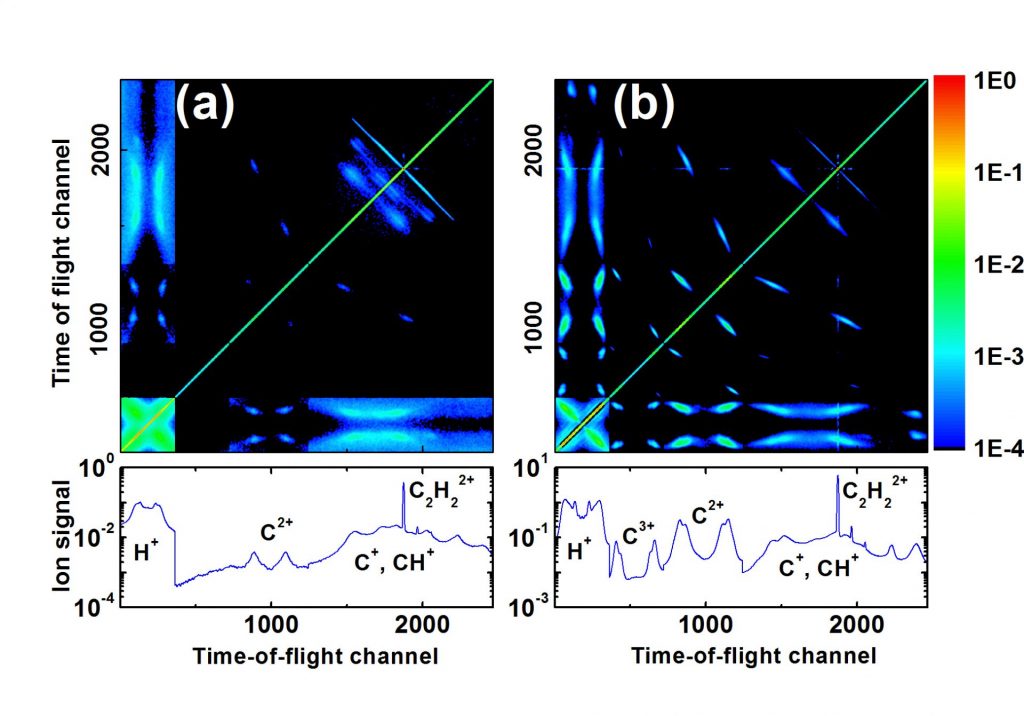When several electrons are ejected from a molecule by a femtosecond laser pulse in the 10141015 Wcm-2 intensity range, the Coulomb repulsion between the resulting multicharged atoms leads to fragmentation called Coulomb explosion. The atomic fragments trajectories are determined by their initial positions within the molecule: In principle the molecular geometry may be inferred from these trajectories. For instance, the linear geometry of acetylene may be deduced from both covariance maps recorded at 1014 and 3×1014 Wcm-2. However, nuclear motions during the laser pulse of 40 femtoseconds allow charge-resonance enhanced ionization (CREI) to take place. This effect discovered by A.D. Bandrauk et al. (Université de Sherbrooke, Canada) leads to fragments emitted at larger distances than the original bond distances, and inhibits any conclusion about the molecular geometry. We reduced this effect by using pulse durations of 10 femtoseconds. Recently, the electron emission from CREI was detected separately from other electron emission channels using molecular alignment. Differential electron-ion coincidence experiments may lead in the future to Coulomb explosion detection at the molecular bond distances and hence give a simple and straightforward diagnostic of the molecular geometry.
Collaborations: ISMO (Université Paris-Saclay), LSI (École polytechnique)



